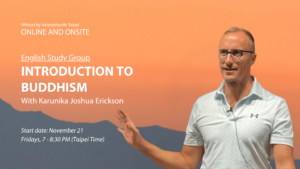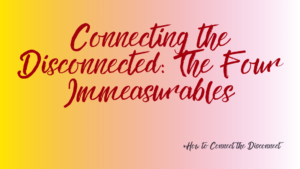One day I arrived early to a large event, hoping to orient myself and settle in before it began. However, I was approached right away by a friend requesting that I help with some last-minute flower arranging. “Oh my dear, no, no; I don’t do flowers. Haven’t a clue. I couldn’t possibly help.” On and on I protested while she gently dragged me down the hall and into the kitchen, where buckets of blossoms stood at attention beside an assortment of vases.
I stood there, frozen in my fear of not being able to do what was expected, worried about making a mess of it, about being a disappointment instead of a help. My friend looked at me quizzically as I blurted out: “I really can’t do this. You’re trained and experienced; I’m not. It will be awful.” Then, with great kindness, she said, “Carole, just think of it as an offering.”
In that moment everything changed. Her words went right into my heart and I understood. This wasn’t about me. This wasn’t about skill or lack of skill. This was about offering whatever I could to the situation in which I found myself. Making that simple shift enabled me to cut through the negative thinking that was holding me back. I was able to relax into more openness, clarity and a willingness to step out of my comfort zone.
My friend happened to be schooled in the art of flower arranging and was a skilled practitioner of Ikebana. However, she did not try to school me in that moment, but instead gave me a deeper instruction about how to approach something I was so uncertain about. She relieved my anxiety by giving me a fresh way to think about the activity and let go into the simple act of offering.
Calm abiding meditation is also very helpful in becoming familiar with how we get stuck in our thoughts and emotions and how to get unstuck. If you are not familiar with this practice, try the following:
Find a quiet place in which you can sit comfortably in an upright, relaxed posture.
You may sit on a cushion with your legs crossed or sit in a chair with your feet flat on the floor in front of you. Hands resting on your thighs.
With a soft downward gaze, look at the floor about 4 feet in front of you.
Place your attention on your breath and breathe normally.
You will notice thoughts and emotions of all kinds. Try not to follow them. Simply observe them coming and going. If you notice that you are getting caught up in them, gently bring your attention back to your breath.
Do this for five to fifteen minutes a session, gradually increasing the length of the sessions.
If you wish, at the end of each session, offer your practice for the benefit of others.
And if you feel concerned about “not doing it well,” just think of your meditation as an offering.

Carole Fleming is a founding member of Nalandabodhi and student of Dzogchen Ponlop Rinpoche. Now retired from the practice of psychotherapy, she lives in Santa Rosa, CA where she enjoys gardening and being mother, grandmother and great grandmother to an ever-expanding family.






